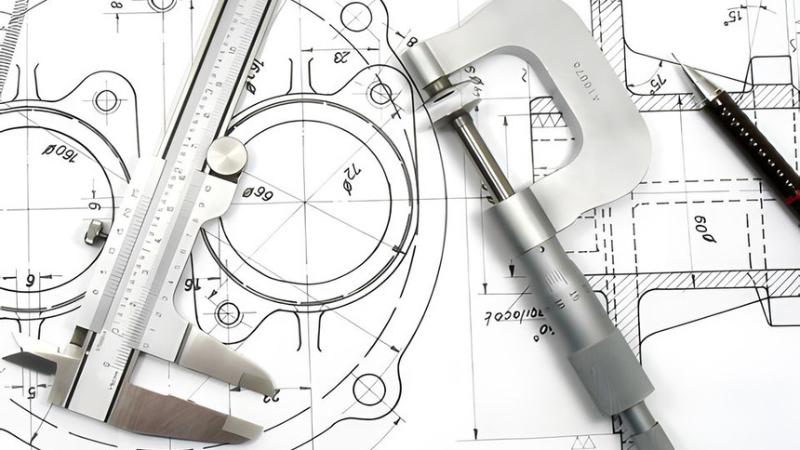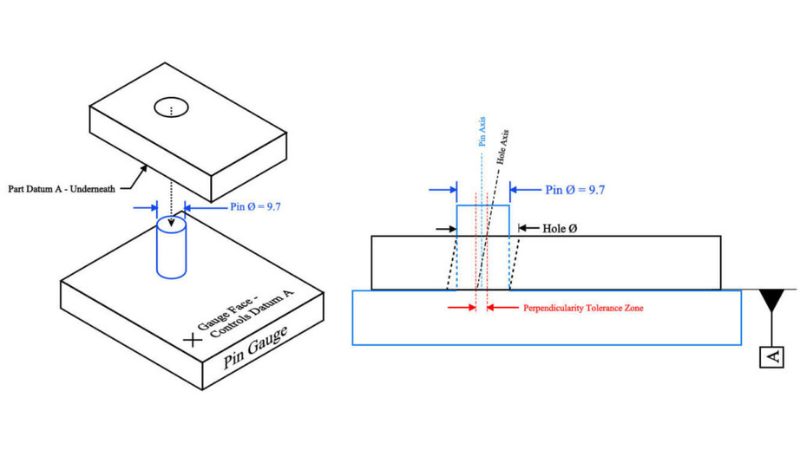Being able to easily decide what the right standards are for your manufacturing company is important. ISO 2768 represents one of the worldwide acclaimed standards. Below are details explaining what it is, its importance, some advantages, disadvantages, etc.
Let’s read on.
What are ISO 2768 Standards?
ISO 2768 is a globally recognized system or standard stating vividly what the general tolerances of angular, linear, and geometrical measurements with regards to engineering drawings.
This standard was put together or brought about by the International Organization for Standardization to ensure designing and manufacturing procedures are easy.
ISO made this happen by having all limits stated clearly to ensure all industries maintained quality and consistency in their various manufacturing.
This standard is partitioned into different parts like:
- ISO 2768-1: Linear and angular measurements
- ISO 2768-2: For geometrical tolerances
- ISO 2768-3: Specific tolerance applications

Importance of ISO 2768
There are countless reasons why this standard is worth sticking to. Here they are:
- This standard aids in maintaining precise and consistent manufacturing methods and engineering drawings.
- It handles variety of tolerances in different industries such as parts and systems. This makes it almost impossible for errors in dimensions and misalignments.
- With ISO 2768 standard set as the common framework, communication is enhanced between the designer, the manufacturer, and the quality control team.
Advantages of ISO 2768
Listed below are some merits that come with the ISO 2768 standard:
- Makes the procedure from designs to manufacturing effortless for all parties involved.
- Makes sure the level of specification uniformity of tolerances is high. This helps prevents any errors when everything is done.
- With ISO standard followed through with, companies save money. This is because detailed checks and adjustments are reduced.
Limitations of ISO 2768
Like any other ISO standard, the ISO 2768 may also have some limitations:
- ISO 2768 will not work for all applications. This is mostly so where precision levels required are a bit higher.
- It is easy for designers to miss-apply this standard, particularly when they have no clarity into its specification use.
- Most companies solely rely on one aspect of these standards without considering the other specifications connectedto various applications.
Structure of ISO 2768
It is important to know that ISO 2768 is apportioned into 3 main areas or parts. They are:
- ISO 2768-1: Handles all general tolerances for both linear and angular measurements. Its tolerances include fine (f), medium (m), and coarse (c).
- ISO 2768-2: This handles all geometrical tolerances. This include form, orientation, and position tolerances.
- ISO 2768-3: Makes clear specific tolerances for ideal uses and materials, providing extra guidance where general tolerances might not be ideal.

General Tolerances for Linear and Angular Dimensions
These tolerances have to do with the ISO 2768-1. This standard apportioned these tolerances into 3 major classes. They are:
- Fine (f): Ideal for high precision components that require minimal deviation.
- Medium (m): Used in general manufacturing, where both precision and cost are needed.
- Coarse (c): Perfect for parts that are less critical, where larger deviations are welcomed.
Main aspects entail:
Linear Dimensions
- 1 mm to 10 mm: Tolerances that range from ±0.1 mm (fine) to ±0.5 mm (coarse).
- 10 mm to 120 mm: Tolerances range from ±0.2 mm (f) to ±0.8 mm (c).
- 120 mm to 315 mm: Tolerances mostly range from ±0.3 mm (f) to ±1.2 mm (c).
Angular Dimensions
- 1 mm to 10 mm: Tolerances that range from ±1° mm (fine) to ±3° mm (coarse).
- 10 mm to 50 mm: Tolerances range from ±0.5° mm (f) to ±2° mm (c).
- 50 mm to 120 mm: Tolerances mostly range from ±0.3° mm (f) to ±1° mm (c).
- 120 mm and above: Tolerances ideally range from ±0.2° (f) to ±0.5° (c).
The above general tolerances make it possible for components built according to ISO 2768 fit perfectly together and function well too.
General Tolerances for Geometrical Tolerances
These tolerances fall mainly under the ISO 2768-2, which focuses more on component form, orientation, and position.
Form Tolerances
- Flatness: Makes clear the acceptable variation in the flatness of a surface.
- Straightness: Controls the permissible deviations from an ideally straight line.
- Roundness: Ensures all part circular parts are as round as it should be to work properly.
Orientation Tolerances
- Parallelism: Specifies how two parallel features or surfaces should be.
- Perpendicularity: Regulates the permissible deviation froma 90° angle in-between features.
- Angularity: Controls the permissible variation from a specific angle apart from 90°.
Position Tolerances
- Concentricity: Makes sure the features center axis is well-matched with a reference axis.
- Symmetry: Takes charge of the evenness of features ideally relative to central plane.
- Position: Specifies the permissible deviation in area of features like holes.
Each of these tolerances listed above are classified based on precision necessities, with tighter tolerances for general benefit.
Comparing ISO 2768 with other Standards
When tolerance governing standards in manufacturing are mentioned, ISO 2768 is not the only one. For you to know what will be ideal for you, you must know the differences between ISO 2768 and other common ones out there too. Here they are:
ISO 2768 vs. ASME Y14.5 (GD&T)
1. Geographical Use
ISO 2768 is used more in Europe and Asia, while ASME Y14.5 is used more in Northern America.
2. Scope
ISO 2678 offers general tolerances. This makes it easier and simpler to apply where standard uses are concerned. ASME Y14.5 on the other hand provides a highly detailed approach using Geometric Dimensioning and Tolerances or GD&T, which entails comprehensive symbols and guides for specifying precise geometrical relationships.
3. Accuracy
ISO 2768 is mostly utilized where there is the need for only general tolerances. ASME Y14.5, however, is utilized for higher precision applications which require comprehensive specifications.
ISO 2768 vs. DIN 7168
Origins
ISO 2768 is a standard recognized internationally. DIN 7168 is a standard recognized mainly in Germany for general tolerances.
Similarity
Both standards are almost the same. However, DIN 7168 was introduced earlier and is a localized standard that ISO 2768 later suspended.
Any Differences?
The major difference falls within ideal tolerance values and classifications. However, both standards have their concepts aligned.
ISO 2768 vs. JIS B0405
Origin
JIS B0405 is a Japan standard that is aligned more with ISO 2768.
Differences
Both ISO 2768 and JIS B0405 are made use of in applications that are the same. The only difference is that JIS B0405 is used more in Japanese industries.

Applications of this ISO Standard
Here are some applications of the ISO 2768 standard and its use:
- Automotive industry for manufacturing parts like shafts, housings, and gears.
- Aerospace industries: Applied to parts that are non-critical and where there is no need for precision.
- Manufacturing machines: To produce parts of the machine like brackets, support structures and frames.
- Consumer Electronics: Used in producing non-precision components like brackets and casings.
- General Engineering: Ideal to various general engineering tasks where designing doesn’t demand high level of precision.
Conclusion
ISO 2768 is the basic standard for general tolerances in manufacturing and engineering. Knowing more about this helps a lot to make your manufacturing needs clearer.
More resources:
CNC Machining Tolerances – Source: KDMFAB




